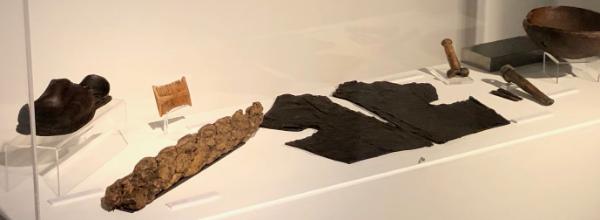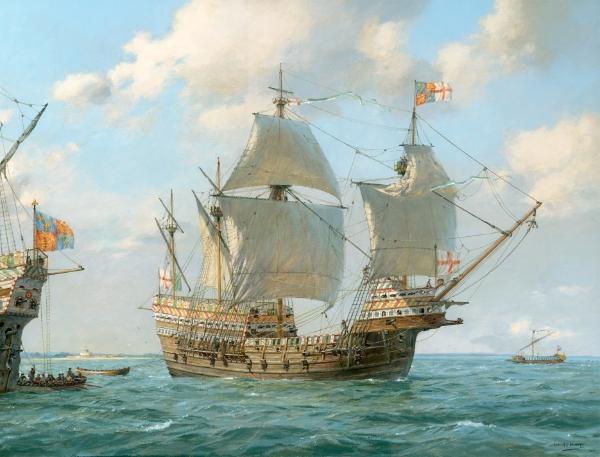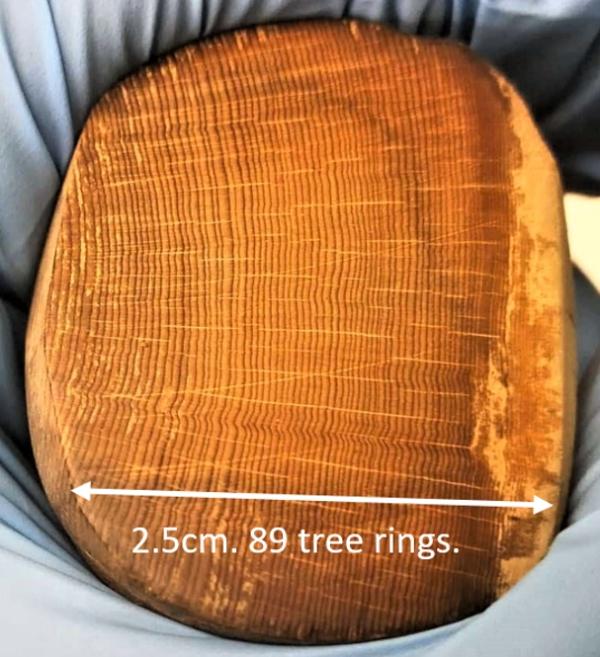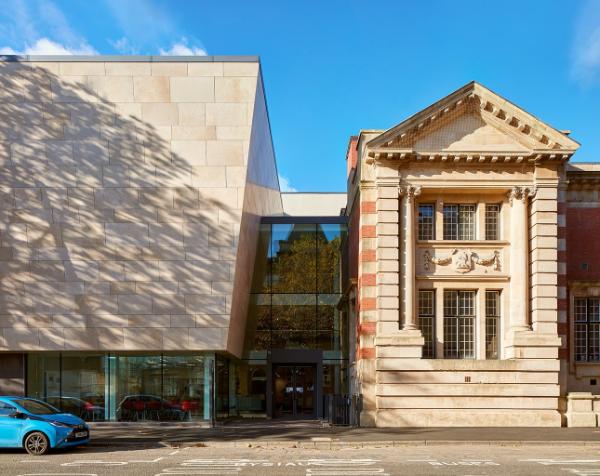Please note, this page has been archived and is no longer being updated.
Items from the Mary Rose warship, the pride of Henry VIII’s navy, are now on show at Swansea Council’s Glynn Vivian Art Gallery, in an exhibition drawing on Swansea University research.
The exhibition brings to life the fascinating world of a Tudor warship and its crew, lost in battle in 1545.
Exhibits include a 6ft 6in longbow that probably belonged to an elite archer on board. There is also an arrow chest with ten original arrows and personal items such as a jacket that would have been worn by one of the hundreds of sailors who died when the ship went down.

Picture: arrow chest and longbow from the Mary Rose, on display in the Glynn Vivian Gallery, Swansea
The Mary Rose sank off Portsmouth - in full view of Henry VIII - during a naval battle with the French. The wreck was famously raised from the seabed in 1982.
The items are on loan from the Mary Rose museum in Portsmouth. This is the first time that artefacts from the ship have been on public display anywhere in Wales.
The exhibition, which is free of charge, is called Mary Rose: People and Purpose. It opened on 19 July, 474 years to the day since the ship sank. It is hosted at Swansea’s stunning Glynn Vivian Gallery and is staged in partnership with Swansea University and the Mary Rose Trust.

Picture: treasures from the deep, from a bowl and a young sailor's jacket to a shoe, rope and even a nit comb
As well as original items from the ship, the exhibition includes a crystal skull which is an exact replica of the skull of the captain of the archers.
The skull and other items relating to research were 3D printed by experts at Swansea University College of Engineering. Images of Tudor longbow wood being studied by specialists at the university will also be on display.
The University has been working closely with the Mary Rose Trust for many years, examining remains of the sailors and the artefacts on board, shedding new light on the lives of a Tudor naval crew.
One extraordinary discovery made recently, based on Swansea research, was that the ship’s crew included sailors of African, Mediterranean and Middle Eastern origin.
It shows that the men making up the English navy were far more diverse than had previously been thought.

Picture: The Mary Rose, Henry VIII's warship, which sank in 1545; credit Geoff Hunt/Mary Rose Trust
Swansea University experts are contributing in various ways to the Glynn Vivian exhibition, to the activities around it and to research into the items on display.
Professor Mary Gagen, of the College of Science, is studying a sample of the wood from the longbow to see what it reveals. Dr Will Bryan, in physics, is looking at the possibility of analysing isotopes from the same longbow to establish the geographic location of the bow wood.
Historian Dr Catherine Fletcher, an expert on the period, is advising on the historical background in the era when the ship sailed the seas.
The exhibition will tie in with the UK-wide Being Human Festival, for which Swansea is one of the national hubs, with a programme of events organised by Dr Elaine Canning and her team at the university’s Cultural Institute.
Dr Nick Owen, of Swansea University College of Engineering, who has led the University’s work on the Mary Rose, said:
“These are genuine treasures from the deep, bringing the world of the Tudors alive.
“They went down with the ship to the bottom of the Solent, with Henry VIII looking on. There they lay for nearly 500 years. And now they are here in Swansea for the public to see.
“The Glynn Vivian, recently refurbished, is a stunning setting. The exhibition also reinforces links between Swansea and Portsmouth, two of Britain’s great maritime cities.
“I have carried out research with the Mary Rose Trust for almost 10 years. It has been brilliant, and never fails to throw up the unexpected, shedding more light onto the amazing lives of Tudor seamen. The Mary Rose collection is truly a research treasure trove.”

Picture: a cross-section of a piece of wood from the longbow, which Swansea University tree ring experts and physicists are analysing
Alex Hildred, of the Mary Rose Trust, said:
"The Mary Rose Trust have been working with Swansea University for almost 10 years and the Glynn Vivian exhibition is an excellent opportunity to explain to the public some of the work they have carried out.
It also gives people who might not be able to travel to Portsmouth the opportunity to see, up close, some of the unique Tudor artefacts recovered from Henry VIII’s favourite warship Mary Rose."
Robert Francis-Davies, Swansea Council’s cabinet member for investment, regeneration and tourism, said:
“July 19 marks 474 years since the Mary Rose sank so it’s a pleasure to announce this new exhibition at our beautiful Glynn Vivian Art Gallery.
“As Swansea celebrates its first half century as a city it’s wonderful that we have been able to work with Swansea University and the Mary Rose Museum to bring these objects for public exhibition.”

Picture: The newly-refurbished Glynn Vivian Gallery in Swansea, home to the Mary Rose exhibition
- Friday 26 July 2019 11.17 BST
- Friday 26 July 2019 11.42 BST
- Public Relations Office
